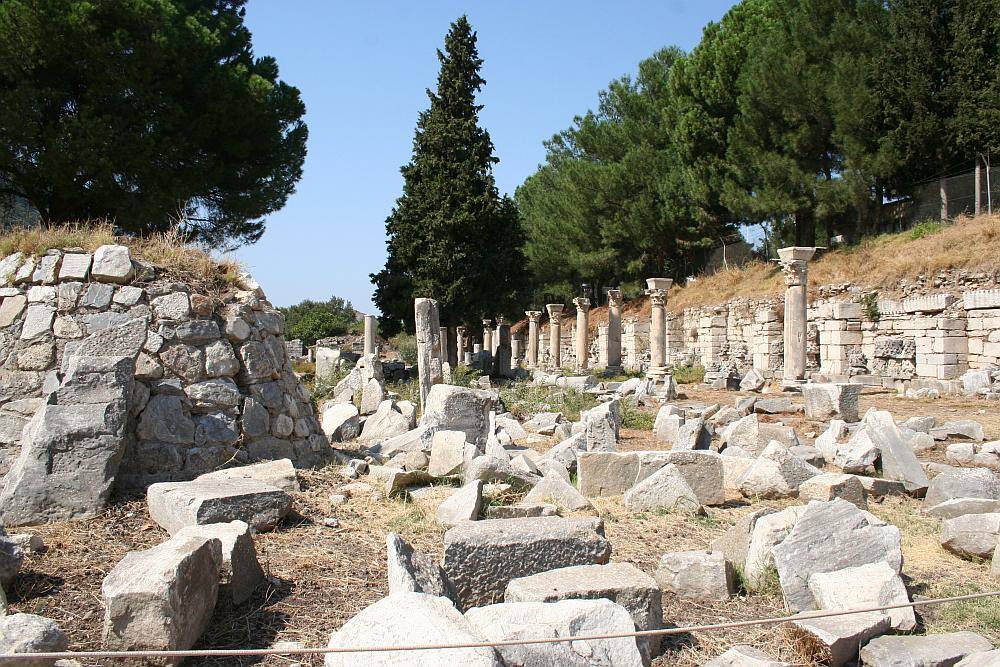Sailing past the West coast of the Aegean Sea, before tourists, as if from the history of the Ancient world there are mysterious outlines of the ancient city of Ephesus. Turkey gives the opportunity to walk the streets of the ancient city, where thousands of years ago stood the temple of the goddess Artemis, which gained fame as a world heritage, part of the Seven Wonders of the World. Legends and rich history of interesting events envelop the unique historical monuments preserved on the streets of Ephesus since the founding of the city before our era, its heyday and decline.
Final excavations have not yet been made, but the former splendor can be judged by the already open sights. About the greatest cultural heritage that Turkey has received, clearly say the photo and map of Ephesus attractions, which will be useful to the curious tourist and will make a convenient route.
Marble Street
Moving from the main entrance to the historic part of Ephesus, go to the Marble Street, laid in the V century and stretches for 400 meters. You can take a Ephesus Ancient City Tour in order to explore this incredible streets.
 Bolshoi Theatre
Bolshoi Theatre
The beginning of the street attracts attention by the construction of the Bolshoi theater, erected by the Hellenes in the III-I centuries BC and rebuilt during the Roman Empire. The theater auditorium, designed for 25 thousand visitors, gradually rises above the stage to a height of 30 meters. The construction of the theater was carried out in three stages, which was caused by the growth of the urban population. During the Byzantine Empire, the theater became part of the city wall.
 The lower Agora
The lower Agora
On the street, there was a lower Agora-trading area. Along its length, there were shops for trade. On both sides, the street was decorated with many pedestals with sculptures. It also had an extensive sewer system running underground. Marble street was opened out to the street Kuret, where most of the attractions.
 Curetes Street
Curetes Street
The Curetes Street, stretching along the foot of the slope, starts from the library of Celsus and ends at the gate of Hercules, overlooking the Agora. Its surface, lined with marble slabs and local stone, preserved from the IV-V centuries. Before tourists appear located on both sides of the street ruins of ancient buildings with the remains of columns and podiums, fragments of capitals, friezes and sculptural sculptures. An interesting sight of the street is a massive slab of marble, on which the laws of Ephesus are engraved.
 The Library of Celsus
The Library of Celsus
The library of Celsus, erected in 114-135, became the business card of Ephesus. It is named after the famous scientist Tiberius Julius Celsus in the Empire and in ancient times was considered the second-largest book Depository in the world by the number of manuscripts. After the fire, the facade of the library remained, made in two tiers with niches, in which there are mythical sculptures. The decoration of the facade is complemented by skillful columns. In the building of the library the outstanding scientist Celsus himself is buried in a chamber with a sarcophagus. This permission for burial in a public building testifies to the great merits of Celsus to the city.
 House of Love
House of Love
There is speculation that the underground passage was built to hide from the wives of visits to the Brothel unfaithful husbands, allegedly heading to the library. This house had several floors with rooms, the walls of which are decorated with mosaic paintings of beautiful women. Here you can see and preserved antique toilets.
 The Temple Of Hadrian
The Temple Of Hadrian
Passing by the baths of Scholastic, you will see the temple of Hadrian. From it remained standing in the center of the two columns supporting the arch. In the middle of the former tympanum, there was a podium where the statue of Emperor Hadrian towered. The decorations of the religious building were sculptures of the rulers of the Roman Empire at different times.
 Houses on the Slope
Houses on the Slope
The slopes opposite the temple of Hadrian were decorated with elite houses of wealthy citizens, looking with their facades at the street of Curetes. Mansions were built so that each of them became a terrace for the next building. Among the residential complex of the local elite, the House of Peristyle II, Dating from the I century, stands out. Its abundant decor with a variety of frescoes and mosaic floor patterns in all rooms is striking.
 St. John’s Basilica
St. John’s Basilica
Away from the houses of the rich is the Basilica of St. John, built in the VI century. From it remained a platform, the center of which stands out a small tombstone cruciform. It is assumed that under it are relics belonging to the Holy Apostle John, who wrote the gospel in the Basilica.
 Agora
Agora
After passing the street of Curetes through the gates of Hercules, decorated with his statues, tourists get to the Agora-a landmark of the Roman era, the largest and main square of the city, bordered by a majestic colonnade. It was the focus of commercial life and the location of the most important public buildings of Ephesus. The importance of the Agora is evidenced by two sculptures of Artemis, especially revered by the inhabitants.

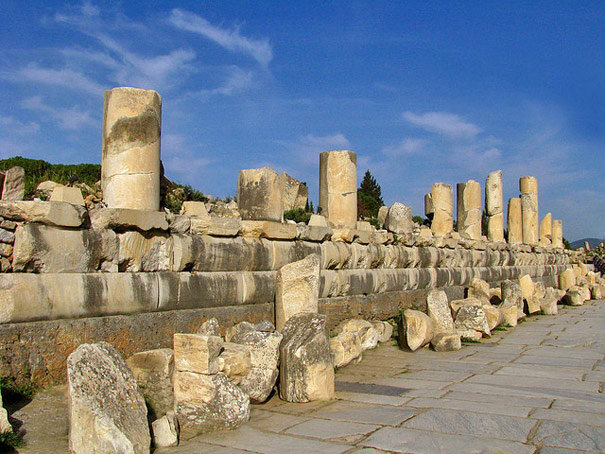
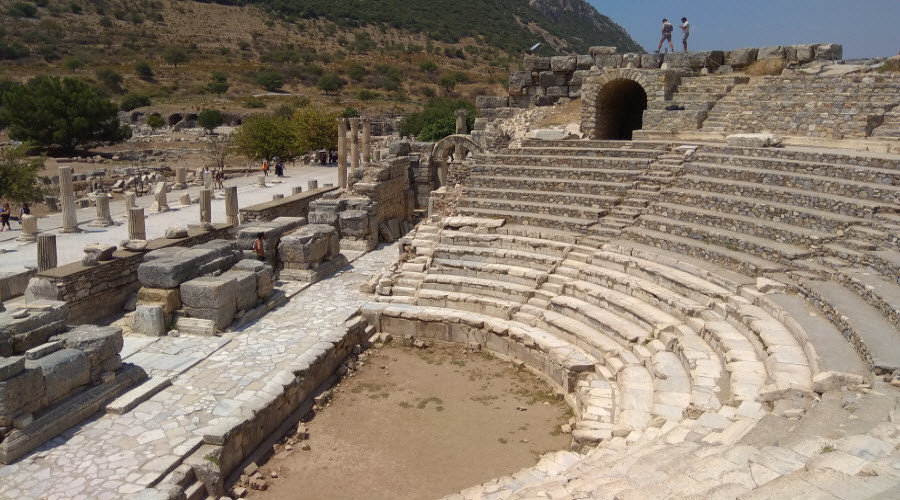 The lower Agora
The lower Agora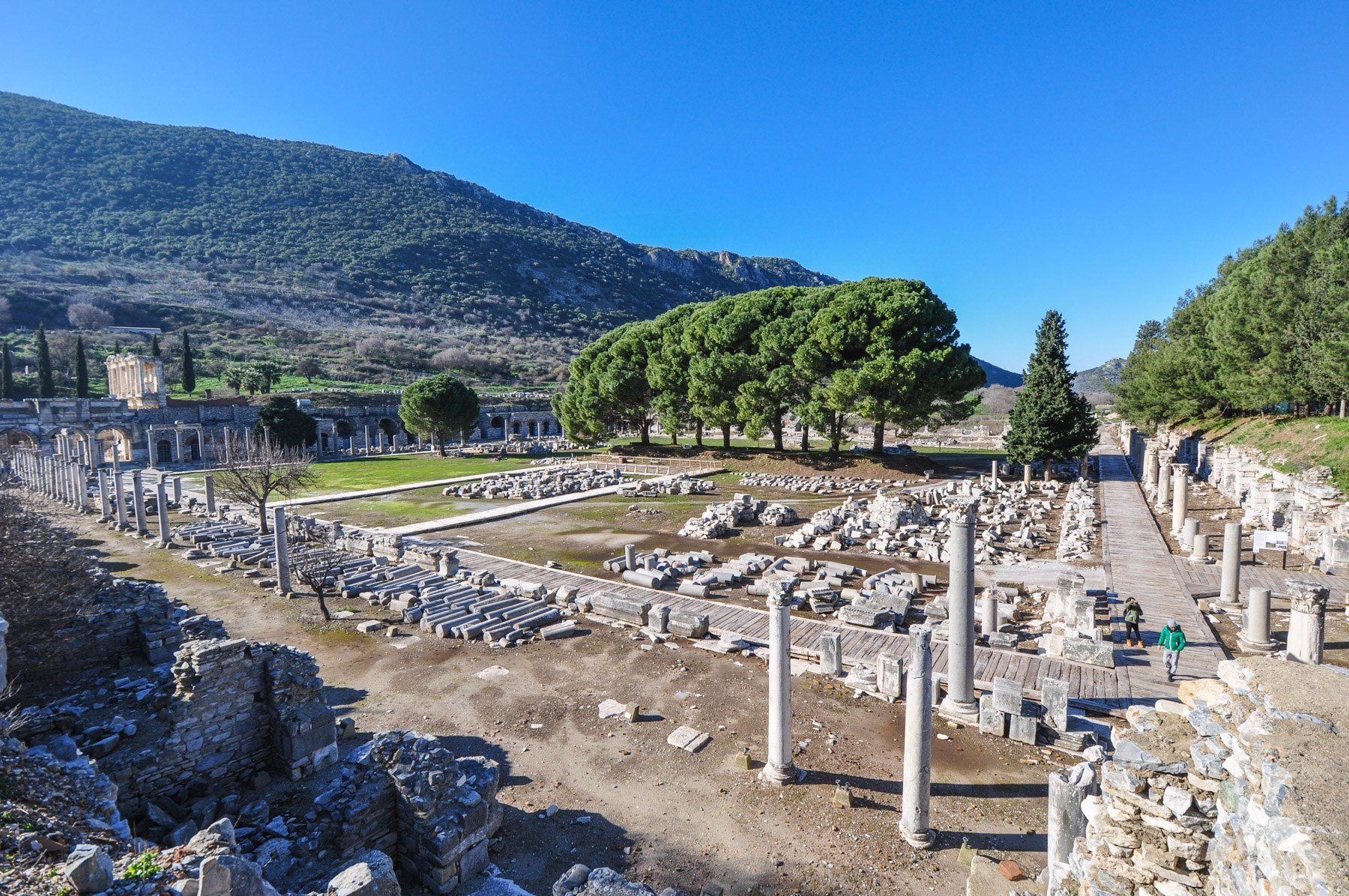 Curetes Street
Curetes Street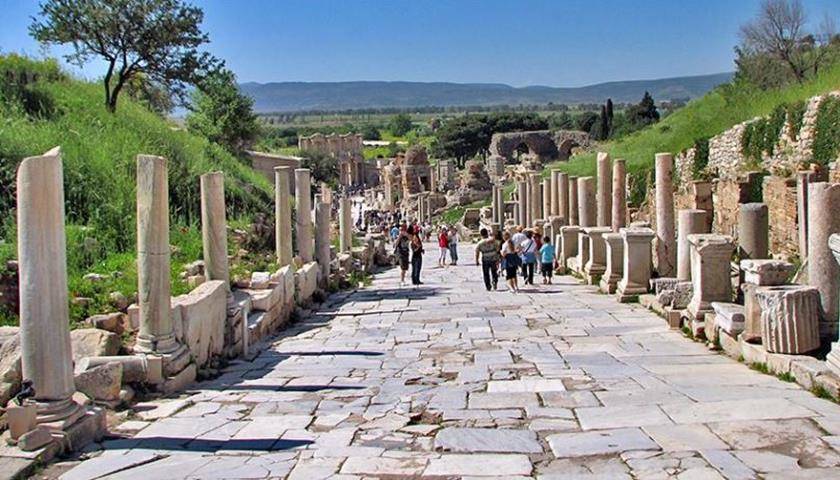 The Library of Celsus
The Library of Celsus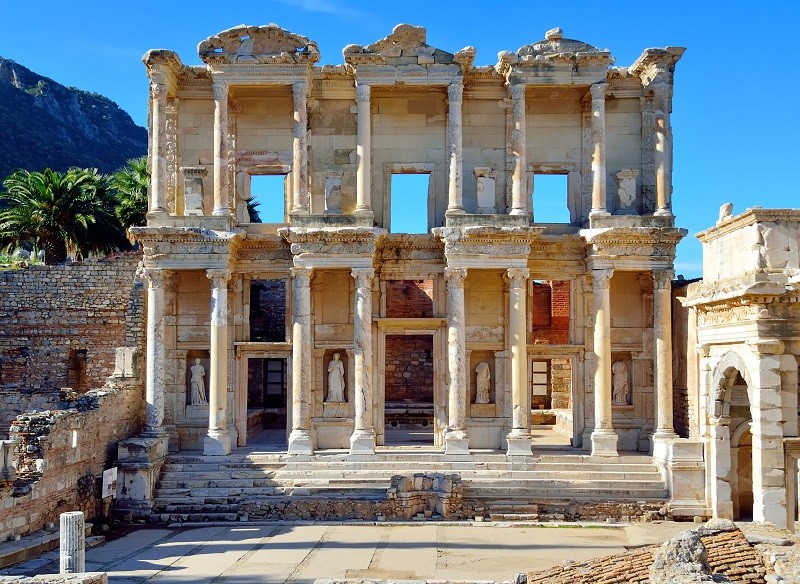 House of Love
House of Love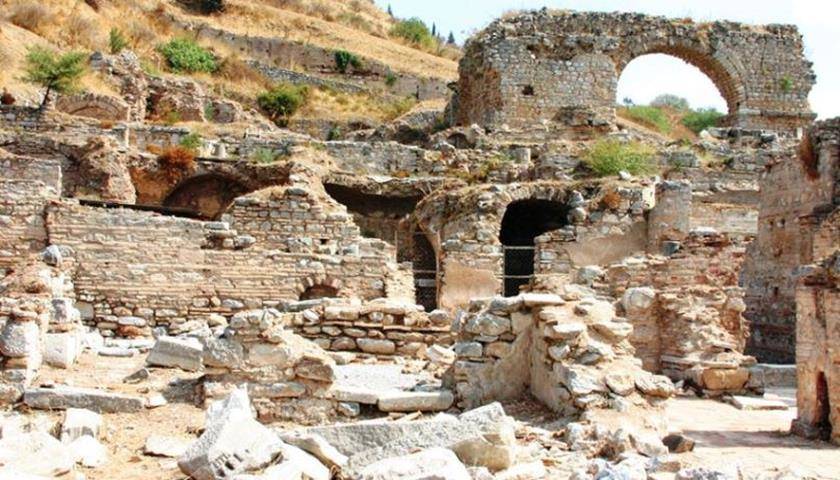 The Temple Of Hadrian
The Temple Of Hadrian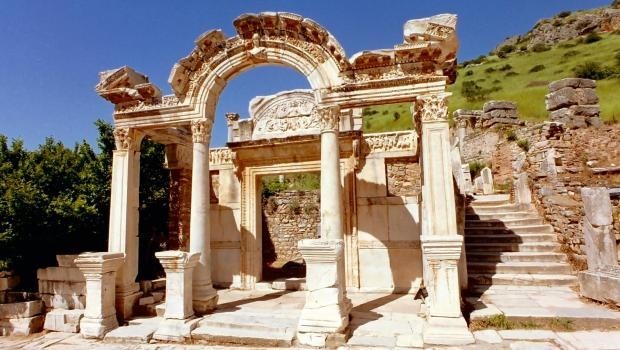 Houses on the Slope
Houses on the Slope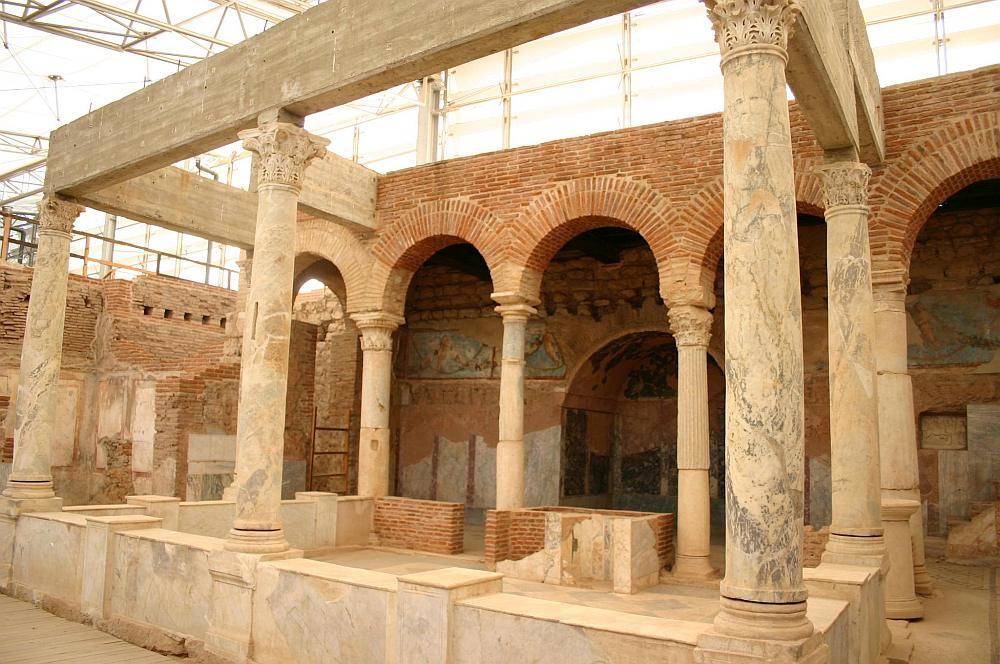 St. John’s Basilica
St. John’s Basilica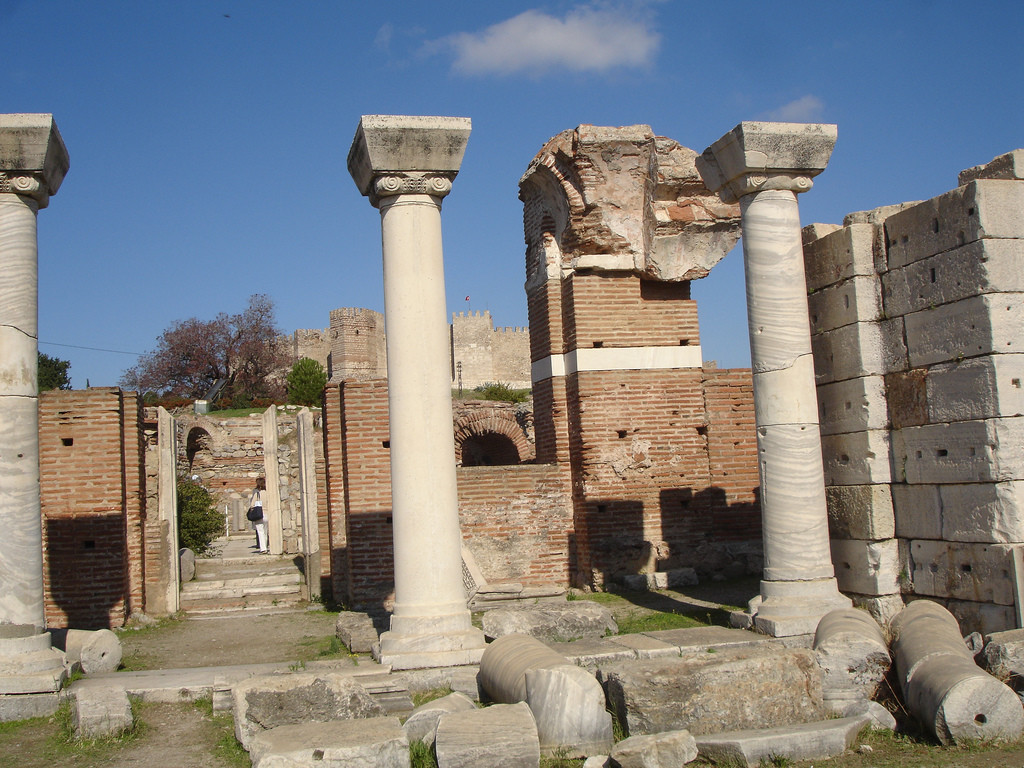 Agora
Agora